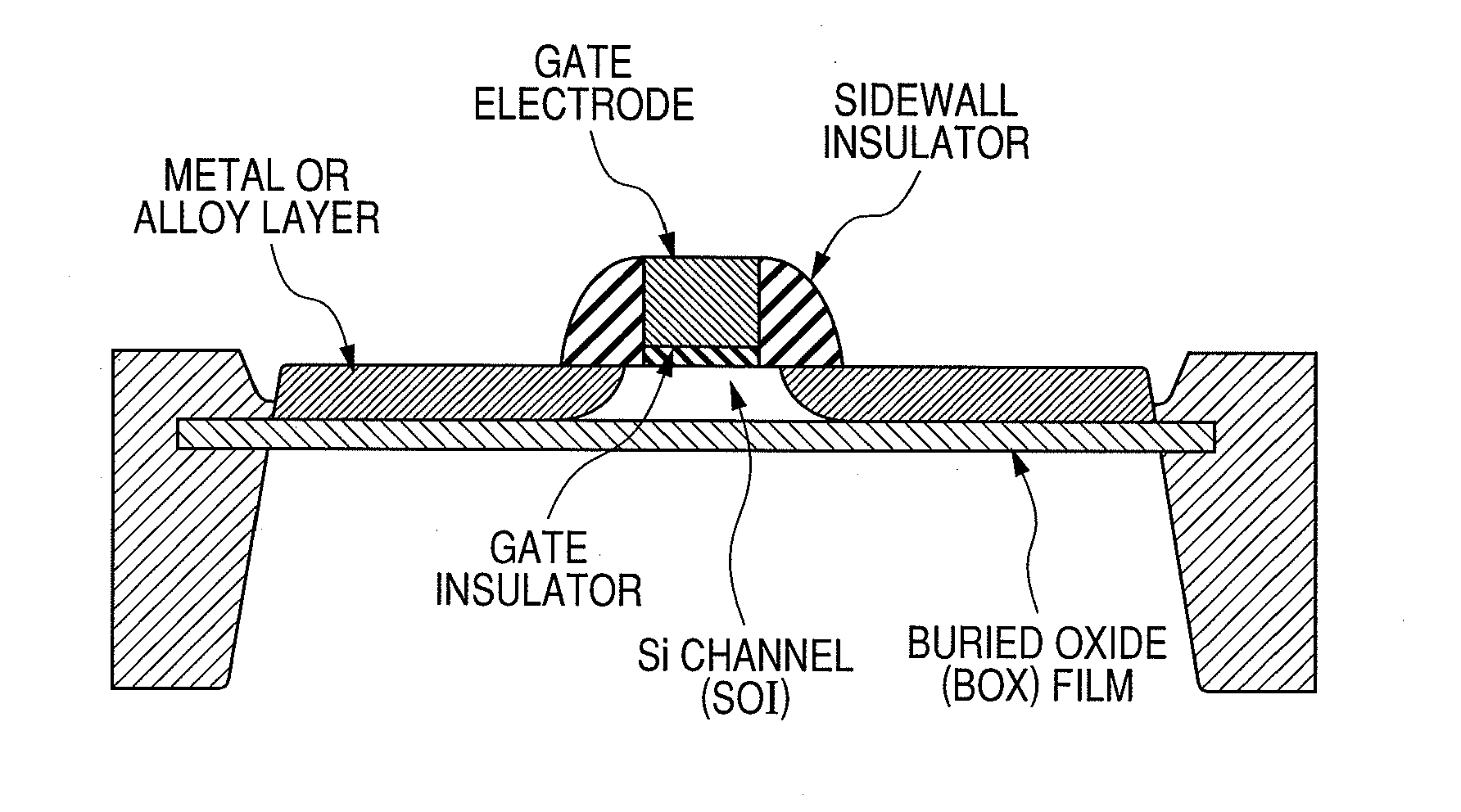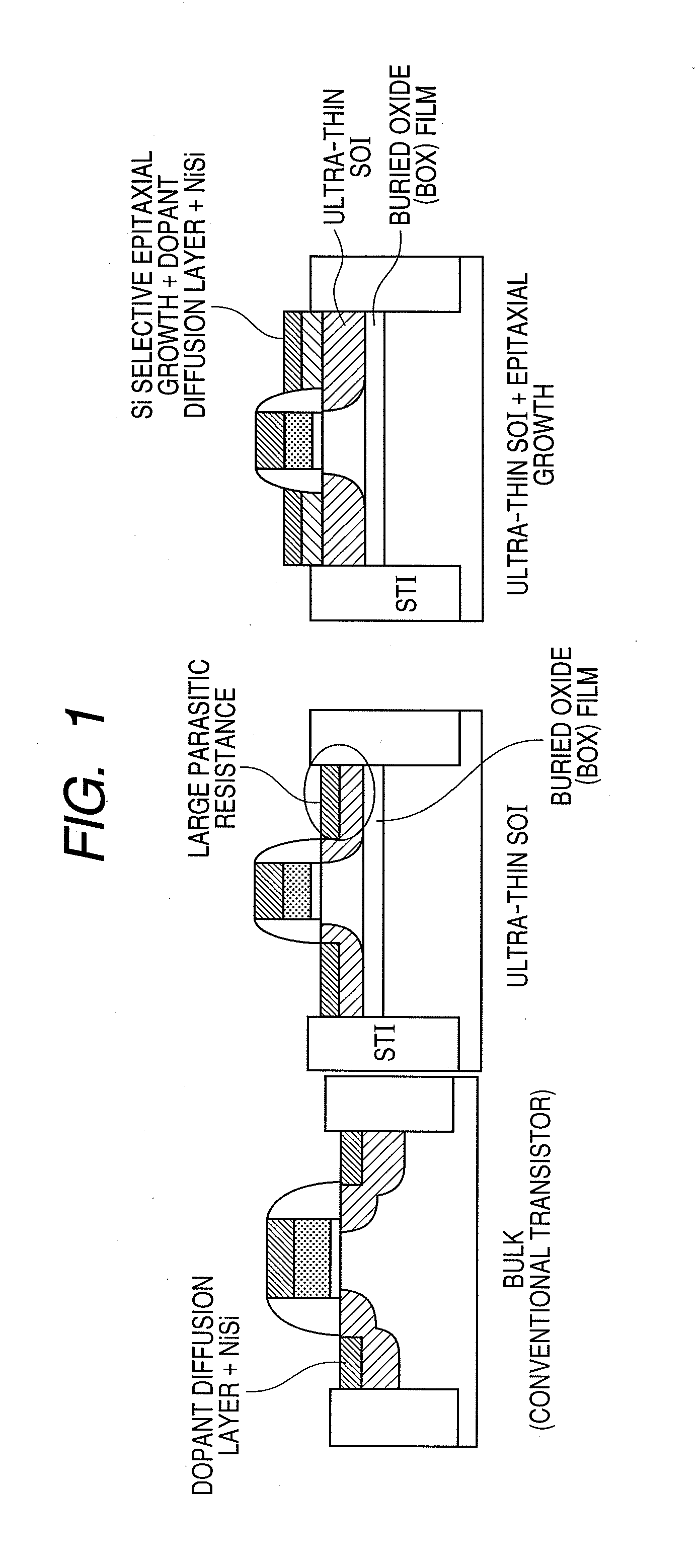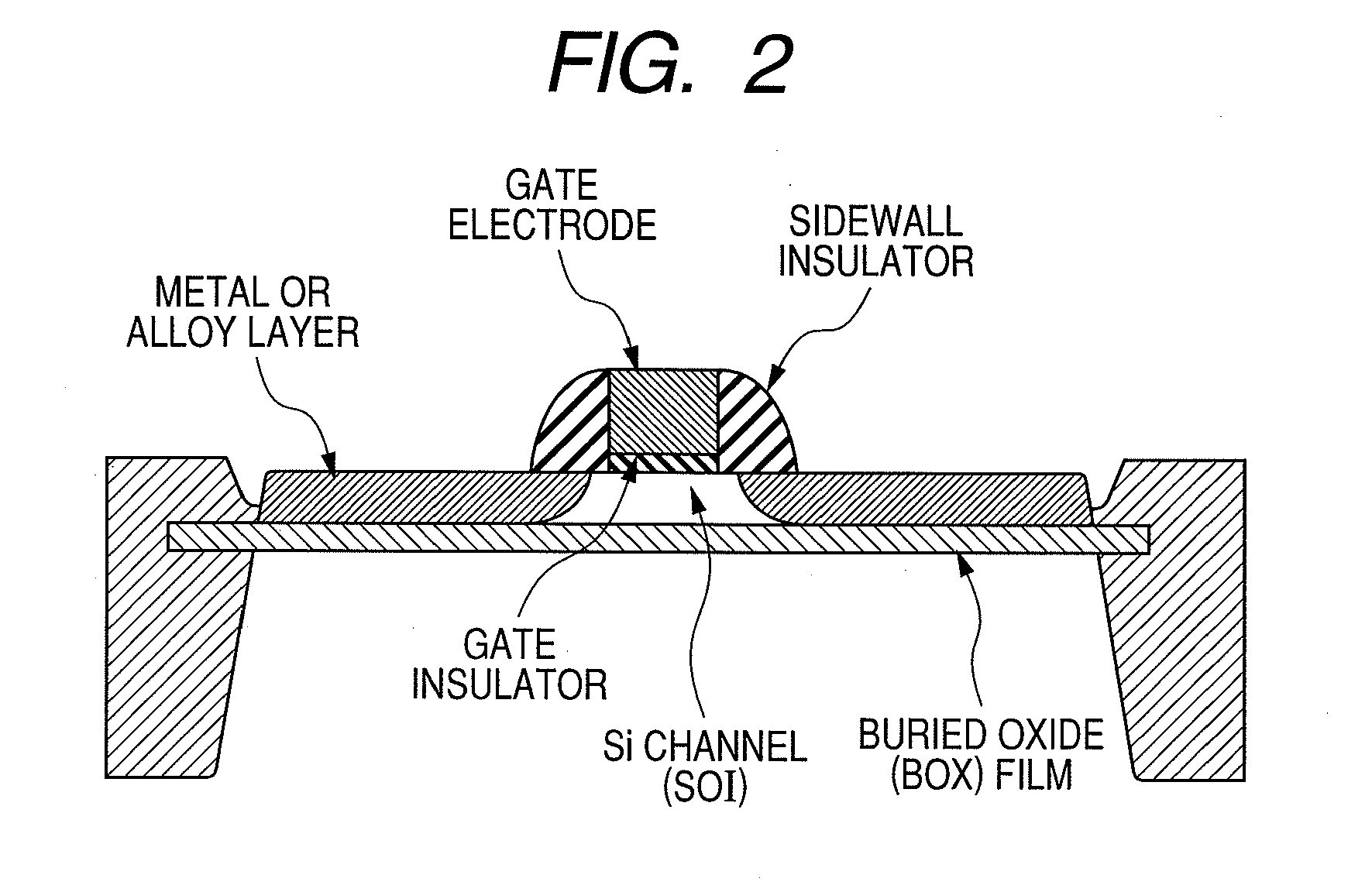Semiconductor device and method for manufacturing the same
- Summary
- Abstract
- Description
- Claims
- Application Information
AI Technical Summary
Benefits of technology
Problems solved by technology
Method used
Image
Examples
first embodiment
[0052
[0053]First, a semiconductor device including a MIS transistor according to a first embodiment of the present invention will be described.
[0054]A method for manufacturing the semiconductor device according to this embodiment is explained in chronological order referring to FIGS. 7 to 15. For simple illustration, only an n-type MIS transistor will be illustrated and described while illustrations and descriptions of the other devices are omitted.
[0055]First, an SOI substrate which includes a supporting substrate 1, a buried insulating layer (BOX layer) 2, and a semiconductor layer (SOI layer) 3 as shown in FIG. 7 is prepared. The supporting substrate 1 is made of p-type monocrystalline silicon having a plane orientation of (100) and a resistivity of about 5 Ωcm. The SOI layer 3 is made of p-type monocrystalline silicon having a plane orientation of (100) and a crystal orientation of in the direction parallel to an orientation flat or notch, and a thickness of 30 nm. The BOX laye...
second embodiment
[0065
[0066]In the second embodiment, a known photolithographic technique is used to form a p-channel MISFET and complete a CMISFET where the polarities (n type, p type) are reversed in all ion implantation steps. FIG. 17 illustrates the effect of an dopant segregation layer in a semiconductor device according to the second embodiment of the present invention. A p+ / n−abrupt junction is formed by a high-concentration dopant segregation layer; the depletion layer is narrow; and hole injection by tunneling current at the valence band edge increases. In other words, this suggests that the Schottky barrier lowers.
[0067]In this embodiment, by controlling the polycrystalline silicon film thickness, the polycrystalline silicon film can also be fully silicidized to form a full silicide gate electrode. Also a gate electrode may be formed from a metal material such as TiN film using a known gate damascene technique or similar technique. It is needless to say that any other metal may be used to ...
PUM
 Login to View More
Login to View More Abstract
Description
Claims
Application Information
 Login to View More
Login to View More - R&D
- Intellectual Property
- Life Sciences
- Materials
- Tech Scout
- Unparalleled Data Quality
- Higher Quality Content
- 60% Fewer Hallucinations
Browse by: Latest US Patents, China's latest patents, Technical Efficacy Thesaurus, Application Domain, Technology Topic, Popular Technical Reports.
© 2025 PatSnap. All rights reserved.Legal|Privacy policy|Modern Slavery Act Transparency Statement|Sitemap|About US| Contact US: help@patsnap.com



